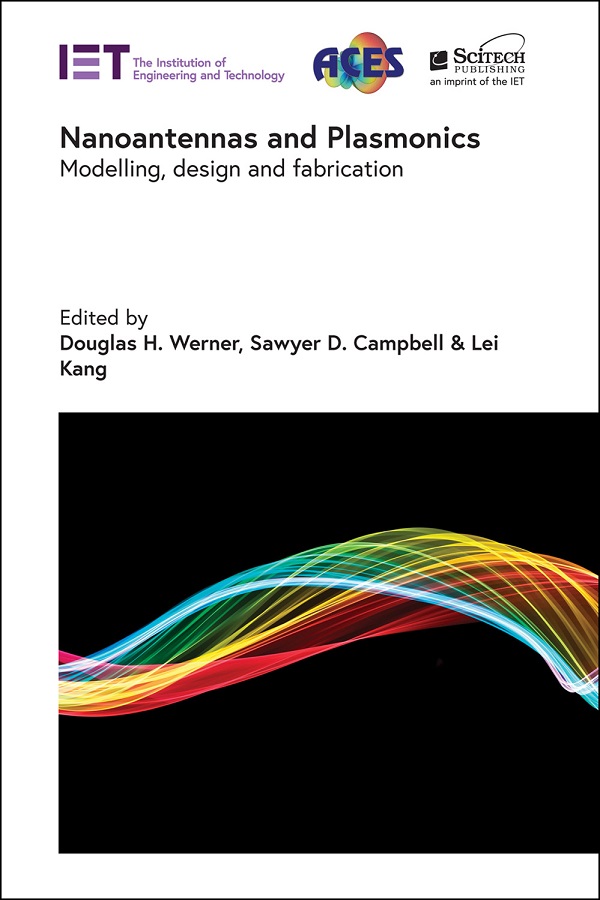- Agricultural Engineering and Technology
- Applied Physics
- Built Environment
- Computing and Networks
- Control, Robotics and Sensors
- Electrical Regulations
- Electromagnetics and Radar
- Energy Engineering
- Healthcare Technologies
- History and Management of Technology
- IET Codes and Guidance
- Manufacturing
- Materials, Circuits and Devices
- Model Forms
- Security
- Telecommunications
- Transportation

Nanoantennas and Plasmonics
Modelling, design and fabrication
Edited by Douglas H. Werner, Sawyer D. Campbell, Lei Kang
This book presents cutting-edge research advances in the rapidly growing areas of nanoantennas and plasmonics as well as their related enabling technologies and applications. It provides a comprehensive treatment of the field on subjects ranging from fundamental theoretical principles and new technological developments, to state-of-the-art device design, as well as examples encompassing a wide range of related sub-areas. The content of the book also covers highly-directive nanoantennas, all-dielectric and tuneable/reconfigurable devices, metasurface optical components, and other related topics.
Intended to provide valuable information for researchers and graduate students in electromagnetics, antennas and propagation, coverage includes the following topics: optical properties of plasmonic nanoloop antennas; passive and active nano cylinders; coherent control of light scattering; time domain modeling with the generalized dispersive material model; inverse-design of plasmonic and dielectric optical nanoantennas; multi-level atomic systems for modeling nonlinear light-matter interactions; nonlinear multipolar interference: from non-reciprocal directionality to one-way nonlinear mirrors; plasmonic metasurfaces for controlling harmonic generations; optical nanoantennas for enhanced THz emission; active photonics based on phase-change materials and reconfigurable nanowire systems; and nanofabrication techniques for subwavelength optics.
About the Editors
Douglas Werner is a professor of electrical engineering and the director of the Computational Electromagnetics and Antennas Research Lab (CEARL), as well as a member of the Materials Research Institute (MRI), at Penn State University. Professor Werner has received numerous awards and recognitions for his work in the areas of electromagnetics and optics. He is a Fellow of the IEEE, the IET, the OSA, the ACES, and the PIERS Electromagnetics Academy. He is also a Senior Member of the National Academy of Inventors (NAI) and the International Society for Optics and Photonics (SPIE).
Sawyer Campbell is an assistant research professor in the Computational Electromagnetics and Antennas Research Lab (CEARL) in the Department of Electrical Engineering at Penn State University. He has published over 80 technical papers and proceedings articles and is the author/co-author of three book chapters. He is a member of the IEEE, the APS, the OSA, and SPIE and is the past Chair and Current vice-Chair/Treasurer of the IEEE Central Pennsylvania Section.
Lei Kang is an assistant research professor in the Computational Electromagnetics and Antennas Research Lab (CEARL) in the Department of Electrical Engineering at Penn State University. He has published over 60 peer-reviewed papers and is the co-author of one book chapter. His research interests include metamaterials at both RF and optical frequencies and nanophotonics.
Publication Year: 2020
Pages: 472
ISBN-13: 978-1-78561-837-6
Format: HBK
